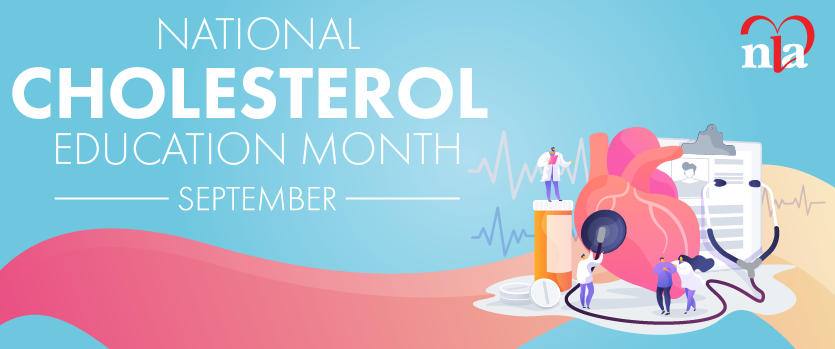In keeping with the theme of this issue of Lipid Spin, I have chosen waist circumference as the physical finding that can lead us to so much more in terms of atherosclerosis risk assessment. As we know, nearly 80 million Americans have metabolic syndrome, and enlarged waist circumference is the physical expression of this syndrome.1 To borrow a phrase from my good friend and mentor, Tom Dayspring, metabolic syndrome patients are diabetics in-training.
It is my goal in this article to provide an understanding of the physiologic pathways that result in carbohydrateinduced lipogenesis and why that potato we consume can contribute to visceral adiposity. This new understanding of how our diet choices have failed us is, I believe, the first line of defense we as health care providers have to save both lives and money.
For more than 30 years our national dietary focus has been to reduce red meat in our diets. As a result, we have been rewarded with an epidemic of prediabetes and diabetes. I believe this focus has not resulted in better health and, in fact, has not been a good choice. As we have focused on less protein in our diets, we have dramatically increased our carbohydrate intake. This also has resulted in a negative impact on our collective lipid panels.
Maki et al published in the Journal of Clinical Lipidology last year that the impact of lean red meat on our lipid panel was not significantly different from that of poultry or fish. I think this concept is important, because we need to move away from carbohydrates and increase our protein choices.2
As various forms of carbohydrates enter the glycolytic pathway, they are converted to two primary intermediate compounds, dihydroxyacetone phosphate and gylceraldehyde 3-phosphate. These two compounds begin the conversion of carbohydrate to triglyceride. They can spin off glycerol or enter the mitochondria of the hepatic cell. In the mitochondria, the transformation of carbohydrate continues as it passes through the Krebs cycle and emerges as citrate that is further converted to acyl coA. Remember that triglycerides are in reality triacylglycerols (Figure 1).

Figure 1
This lipogenic pathway takes on even more importance when we think about the various forms of carbohydrate in the American diet. Glucose, sucrose (the combination of glucose plus fructose to make common table sugar), dairy lactose (glucose plus galactose), and mannose primarily are used for fuel or stored for energy as fat. When we consume these carbohydrates, our bodies respond with an increase in pancreatic insulin secretion. Influenced by this are various hormones that are responsible for satiety, including leptin and ghrelin. The glucose that passes through the blood brain barrier results in changes in regional blood flow that also cause us to know we are full and decrease our appetite.3
This activity occurs as glucose is transported across cell membranes via the glucose transporter type 4, or GLUT 4. It is critical to recognize that fructose is different. Fructose, which has been called the natural sugar in days past, has flown under the radar in terms of its lipogenic potential. Fructose is transported by the GLUT 5 transporter, not found in the beta cells of the pancreas or the blood brain barrier. This has severe metabolic consequences. After the ingestion of fructose, the pancreas does not receive the signal to produce insulin. Since fructose is not transported into the brain, we do not feel full as a result. A recent article in JAMA demonstrated how differently the ingestion of glucose versus fructose affected regional cerebral blood flow. In that study, glucose in effect made the brain sense satiety and fructose did not.3
The net result of this difference in metabolism has broad implications for the American diet. Fructose ingestion may well be a major factor in the epidemic of weight gain, metabolic syndrome, diabetes and, ultimately, cardiovascular disease. Fructose consumption also increases inflammatory biomarkers. This, of course, negatively affects the endothelium. It decreases adiponectin, which helps insulin resistance develop. It decreases leptin, which inhibits central signaling so appetite is not affected. Fructose also decreases ghrelin, a gut hormone that is orexigenic.4 A recent article also demonstrated that fructose increased uric acid, a more recently recognized dysfunction in metabolic syndrome.5
High fructose corn syrup (HFS) has become a staple of the American diet. It was first discovered in 1967 as HFCS 42%. It was further refined in 1977 as HFCS 55%. More current versions contain 90%. It has gained rapid popularity with industry for several reasons. It is cheap, stable and easy to produce, and it lends itself to multiple food sources, including soda, multiple processed packaged foods and even fruit juices that we give our children. HFCS is produced by taking corn—a relatively cheap and abundant commodity—adding glucose isomerase to it and converting the corn to HFCS.4
HFCS is ubiquitous in the American diet. Between 1970 and 1990, our use increased 1,000%. Per capita consumption increased from 0.5 pounds a year to 62.4 pounds a year. A large part of its appeal is how sweet HFCS tastes. On a relative scale, with table sugar—sucrose—assigned a sweetness rating of 100, glucose would rate 43, and HFCS would rate 173.6
All of this becomes more frightening as we realize that the vast majority of HFCS we consume is metabolically shunted to lipogenesis. As our liver struggles under the metabolic assault of the carbohydrates we consume, it must find some way to process the load. With deposition of fat and non-alcoholic fatty liver disease (NAFLD), or steatohepatitis being the last resort, our liver packages all this newfound fat as very-low-density lipoprotein (VLDL) and releases it into the circulation. This ultimately results in the production of atherogenic apolipoprotein B (apoB) containing low-density lipoprotein (LDL) particles. When we consider the effect of cholesterol ester transfer protein on these particles, they become smaller in size, requiring even more of them to carry the cholesterol load our bodies produce. The net result of this cascade of events is, of course, atherogenic disease of our arteries and the cardiovascular events that result.
Thus, we have come full circle. That patient who sits in our waiting room every day with elevated waist circumference is at risk for everything mentioned in this article. Such a simple clinical observation can result in the recognition of the at-risk patient long before any event may occur. At that point we can intervene with appropriate dietary and lifestyle advice, as well as any pharmacologic interventions that are appropriate.
With all the technology and sophisticated serum markers we utilize, please don’t forget the marker that is virtually free. We have the opportunity to save the health care system vast amounts of money. For both health and economic reasons, our patients will thank us for doing this.
Disclosure statement: Dr. Lillo has been on the speakers' bureaus of Merck & Co., Abbott Laboratories, Kowa Pharmaceuticals America, and Amarin Corp. Dr. Lillo has been a principal investigator for ongoing clinical trials with Pfizer Inc., Amgen, Bristol-Myers Squibb, Forest Laboratories, Novartis, and Eli Lilly & Co.






.jpg)
.png)











